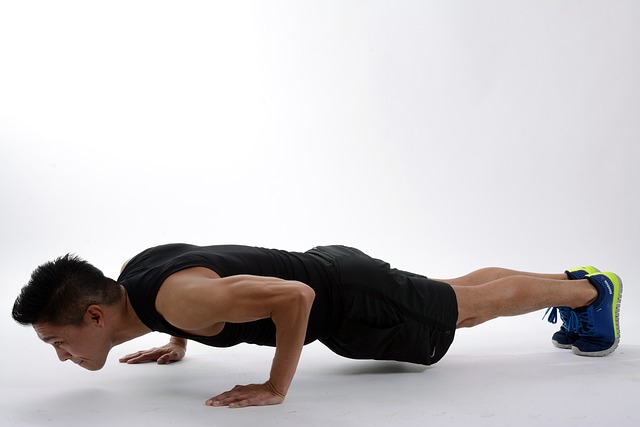It’s difficult to find time to exercise between work, and housework. If this is you, squeezing in a 10-minute workout over your lunch break can be just what you need to stay on your exercise regime and fulfill your activity objectives.
Making time in your busy schedule requires precision—one wrong move and your entire day might become unorganized and even chaotic.
You don’t need lots of time to work out and receive the rewards. Even 10 minutes of vigorous physical activity 3 to 4 days a week is enough to deliver cardiometabolic benefits.
The key is consistency. According to one study, 10-minute workouts are just as effective as 30-60 minute workouts if the total time and intensity are the same at the end of the week.
Now that you’re on board, the next step is to plan your workouts and schedule them into your week. Use any of these quick and easy methods to get some exercise during your lunch hour.
Total Body 10-Minute Circuit
In ten minutes, you can get a lot done, including a full-body workout. This total-body circuit workout can be done anywhere and with no equipment.
Using just your body weight.
That’s what makes it ideal for a lunchtime workout.
If you’re worried that bodyweight workouts aren’t tough enough, don’t be.
Studies have shown that they’re just as helpful for physical health as a combination of aerobic activity and resistance training.
Full-Body Exercise Example
Perform 4-5 rounds with no rest in between:
- Ten squats
- Five push-ups (or modified push-ups)
- Ten chairs (or step) triceps presses
- Five lunges per side
- ten mountaineers
Interval Workout for 10 Minutes
Interval workouts are ideal when you’re short on time and don’t have a lot of equipment. They can be adapted to your abilities and experience level while still giving a hard workout.
Furthermore, studies suggest that high-intensity interval workouts burn fat 28% faster than moderate-intensity, long-duration workouts.
The idea is simple: complete 30 seconds of all-out effort on a predetermined activity, followed by 30 seconds of easy movements or 30 seconds of rest.
Repeat the 30 seconds on/30 seconds off intervals for a total of 10 rounds or 10 minutes.
Interval Workout Examples
Choose one of the following workouts and finish 10 minutes of 30/30 intervals:
- Jumping jacks
- Squat Jump Rope
- Toe touches
- Burpees
- Push-ups
- Squats with a jump
Here are some Tips on Workout Ideas for the Lunch Break
Use the following strategies to make the most of your lunchtime workout:
Plan your workouts for the previous week.
Set boundaries and be upfront; notify your team that you will be working out during your lunch break. You’ll be more likely to work out without distractions this way.
Don’t forget to eat! The nicest part about a 10-minute workout is that you still have time for lunch.
Bring suitable gym attire as well as whatever you’ll need to freshen up afterward (think body wipes, a hair brush, a sports bra, sneakers, and socks).
Download an interval timer app for your phone that will tell you when to work and when to rest.
Tabata Workout
Tabata is another fantastic workout that is ideal for your lunch break. According to research, Tabata training is one of the most effective high-intensity interval workouts for boosting cardiovascular health and enhancing fat-burning potential.
You may modify the time and workout to match your needs. Tabata training is interval training that consists of 20 seconds of full exertion followed by 10 seconds of rest. Despite resting after 20 seconds, the workouts are brisk and keep you moving.
Workout Plan for Tabata
Perform two rounds of the following movements:
- Squats
- Burpees
- Push-ups or modified push-ups
- Lunges
- Mountain climbers
10-Minute AMRAP
Note: AMRAP stands for “As Many Rounds As Possible” or “As Many Reps As Possible.” This workout will require as many rounds as possible in 10 minutes when time is of the essence, like, during your lunch break; a fast workout like an AMRAP can suffice. You can customize AMRAPs by selecting which exercises to perform in your circuits.
Here’s an example of an AMRAP workout.
AMRAP Workout Exemplification
Do as many circuits of the following circuit as you can in ten minutes.
- Five steps per leg, reverse lunge
- Ten sit-ups
- Five squat jumps
- 15 lying leg raises
10-Minute Resistance Band Strength Workout
Working out on your lunch break can be difficult if you don’t have access to a gym. Fortunately, there are some reasonably priced and small pieces of equipment available to help you diversify your routines.
Resistance bands are required for this 10-minute strength workout; you can typically find them online or at a local sports store.
Perform two sets of 10-12 reps for every exercise, with a 30-second break in between.
Shoulder press: stand or sit with the bands under your feet. Bring the bands to the front of your body and place them on your shoulders. In a pressing action, lift the band above your head. Return to your starting place with caution.
Seated row: Sit on the floor with your legs straight. Wrap a resistance band across the soles of your feet. Grasp the resistance band with both hands and pull back, keeping your back straight and chest high. Pull using your back muscles.
Bicep curls: Keep your back straight and chest up while standing or sitting with the band under your feet. Grasp the band with both hands underhand. Curl the bands in an upward motion with your arms shoulder-width apart; slowly return to the beginning position.

Tricep kickback: Wrap the band around a doorknob or desk leg. Grasp the band in front of you with one hand, take a small step back, then lean forward and bend at the hips. Pull the band back, simply bending at the elbow. Squeeze your triceps. Slowly return to the starting position. Switch to the opposite arm.
To Conclude
When it’s difficult to find time to exercise, your lunch break is ideal. The trick is to plan ahead and be prepared; otherwise, you may end up skipping the workout or your meal.
The most difficult thing is determining where to begin. If you’re not sure what workouts or activities are right for you, it may be time to consult with a professional, such as a skilled personal trainer, who can take into account your lifestyle, tastes, and medical needs to help you build a program that works for you.


